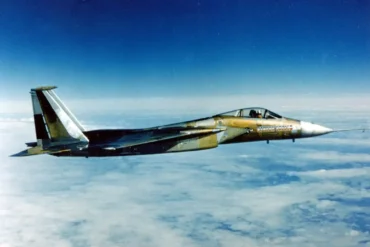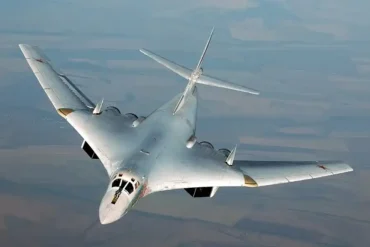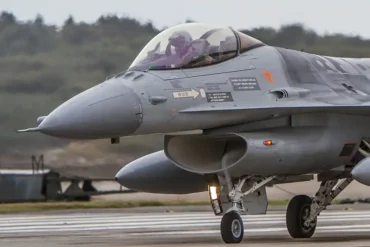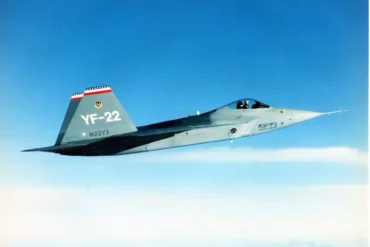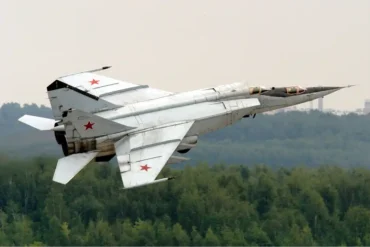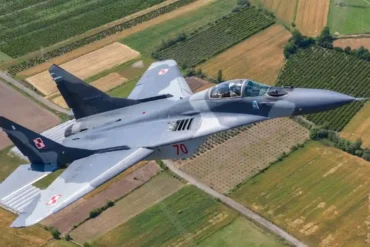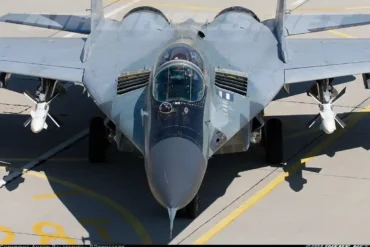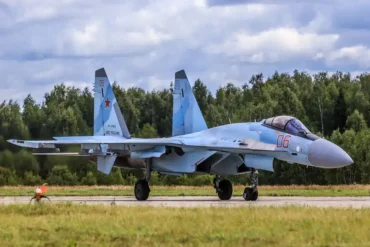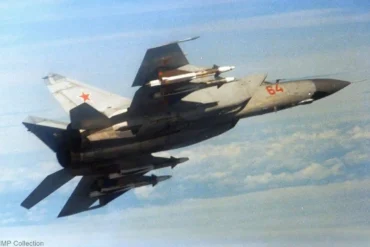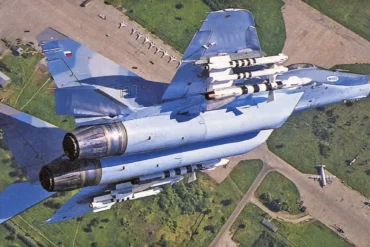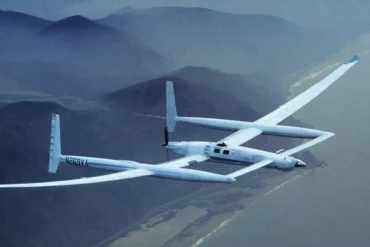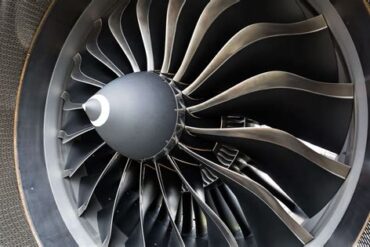The MiG-29, also known by its NATO reporting name “Fulcrum,” has long been celebrated as one of the most capable and versatile fighters in the world. Since its first flight in 1977, the aircraft has been at the forefront of aviation technology, continually pushing the boundaries of performance. A key aspect of its remarkable legacy lies in the world records it has set, underscoring the MiG-29’s exceptional design and the prowess of the Russian aerospace industry. From altitude feats to speed records, the MiG-29 has proven time and again that it is a force to be reckoned with in the skies.
The MiG-29 was initially designed as a light tactical fighter aimed at providing superior counter-air capabilities. While its primary mission was air superiority, the MiG-29 also demonstrated impressive multi-role capabilities, including effective air-to-ground operations with its ability to carry free-fall bombs and unguided rockets. Produced in large numbers starting in the early 1980s, the MiG-29 quickly became one of the Soviet Union’s most relied-upon aircraft. Its success was not only attributed to its powerful performance but also its relatively low cost compared to other fighters of the same generation.
The MiG-29’s continued evolution into newer variants in the 1990s and 2000s highlighted its ability to adapt to emerging needs in avionics, weapons systems, and airframe modifications. Yet, despite these advances, the MiG-29’s performance as a fighter aircraft was already well-established through the impressive records it set in the skies.
MiG-29’s Record-Breaking Feats
The 1995 Altitude Record: A Feat of Engineering Excellence
One of the most significant milestones in the MiG-29’s history came on April 26, 1995, when Mikoyan OKB test pilot Roman P. Taskayev set an astonishing altitude record. Flying a standard MiG-29, Taskayev reached a remarkable height of 27,460 meters (90,091 feet). This achievement was made within the 12 to 16-ton (26,455 to 35,270 lb) gross weight class, a category that included aircraft of comparable size and power. The record was officially recognized by the Fédération Aéronautique Internationale (FAI), cementing the MiG-29’s reputation as a high-performance aircraft capable of achieving extraordinary feats.
The aerodynamic calculations that made this record possible were done by Yuriy S. Vygodskiy, an aerodynamicist at ANPK MiG. Taskayev’s record-breaking ascent demonstrated not just the MiG-29’s capabilities as a fighter but also the ingenuity of Russian aviation technology.
Payload-to-Height Record: A New Benchmark for Fighter Aircraft
In May 1995, another extraordinary feat was achieved by the MiG-29. Test pilot Oleg V. Antonovich set a payload-to-height record, a significant milestone for fighter aircraft. The MiG-29, carrying a payload of 1,000 kg (2,204 lb) and later 2,000 kg (4,410 lb), climbed to an altitude exceeding 25,000 meters (82,020 feet). This achievement was a demonstration of the aircraft’s remarkable versatility, as it was able to carry a substantial payload while still achieving impressive altitude. Like the previous altitude record, this feat was officially recognized by the FAI, further solidifying the MiG-29’s standing as one of the premier aircraft of its generation.
The 2005 Belorussian World Records: A New Era of Performance
As the MiG-29 continued to evolve, so did its ability to break records. In March 2005, pilots from the Belorussian Air Force, including Aleksandr Bochkaryov, Vyacheslav Brovshenko, and Yuriy Kovalyov, set an impressive 15 world records in the upgraded MiG-29BM. These records, which included time-to-height and closed-circuit speed records, were a testament to the MiG-29’s ongoing evolution and the excellence of its upgraded variants.
The mission was supported by the 55th Aircraft Repair Plant (ARZ) and was officially sanctioned by Belorussian President Aleksandr G. Lukashenko and Minister of Defence Col.-Gen. Leonid S. Mal’tsev. The accomplishment not only demonstrated the MiG-29BM’s cutting-edge design but also highlighted the aircraft’s continued relevance in modern air combat scenarios. The records set by the Belorussian pilots covered various parameters, including:
- Time-to-altitude records: These records involved climbing to specific altitudes in the shortest time possible, pushing the limits of both the MiG-29BM’s power-to-weight ratio and its flight dynamics.
- Closed-circuit speed records: These records involved completing a pre-set flight circuit at the highest possible speed, showcasing the MiG-29BM’s exceptional aerodynamics and engine power.
These achievements by the Belorussian Air Force not only served as proof of the MiG-29’s enduring capabilities but also demonstrated the potential of military modernization programs aimed at enhancing the aircraft’s performance.
MIG-29 High Altitude Flight – From the Australian Outback to the Sky of Russia
Join Peter on an unforgettable journey from the Australian Outback to Nizhny Novgorod as he fulfills his dream of flying the legendary MiG-29 to the edge of space. Battling challenging winter temperatures in the stratosphere, Peter reaches an impressive altitude of 16,500 meters before indulging in thrilling aerobatic maneuvers. Captured from 8 different cameras, this video offers a unique perspective on the high-altitude flight experience.
The Legacy of the MiG-29’s World Records
The world records set by the MiG-29 serve as more than just feats of aviation. They represent the pinnacle of Russian aerospace engineering, the result of decades of meticulous design and testing by the Mikoyan Design Bureau and the dedication of test pilots and engineers who pushed the boundaries of flight. These records have not only solidified the MiG-29’s reputation in the aviation community but have also contributed to the global recognition of Russian military aircraft.
The MiG-29’s record-setting performances also underline the importance of aircraft development in elevating a nation’s aerospace industry. The aircraft’s success at various record-breaking events sent a clear message: Russia remained a formidable player in the global aviation market. Furthermore, these achievements fostered international interest, leading to both export deals and strategic partnerships for MiG-29 variants worldwide.
The MiG-29’s Impact on Aviation History
The MiG-29’s world records not only highlight its technical achievements but also underscore the aircraft’s profound impact on the history of aviation. Its design philosophy, which emphasized a combination of agility, speed, and multi-role functionality, has influenced the development of subsequent fighter jets, both in Russia and abroad.
While the MiG-29 is often remembered for its role during the Cold War, it has also demonstrated its utility in the post-Cold War era. The aircraft has been used by numerous countries, and its continuing modernization ensures that the MiG-29 remains relevant in the 21st century. It stands as a symbol of aerospace innovation and serves as a benchmark for future generations of fighter aircraft.
Conclusion: A Symbol of Excellence in Aerospace
The MiG-29’s world records are a testament to the aircraft’s enduring legacy as one of the world’s most capable and high-performing fighters. From its exceptional altitude records to its record-breaking performances in the 2000s, the MiG-29 has proven its supremacy in the skies time and again. These records not only showcase the prowess of the aircraft but also highlight the remarkable achievements of the Russian aerospace industry and the Mikoyan Design Bureau.
As the MiG-29 continues to serve in various air forces around the world, it remains a reminder of what is possible when engineering, innovation, and dedication come together. The MiG-29’s world records will undoubtedly be a part of aviation history for years to come, reinforcing its place as one of the most iconic fighter jets of all time.
By setting and breaking numerous world records, the MiG-29 has ensured its place in the annals of aviation history, proving that even in the face of rapid technological advancements, the aircraft remains a force to be reckoned with in the skies.

